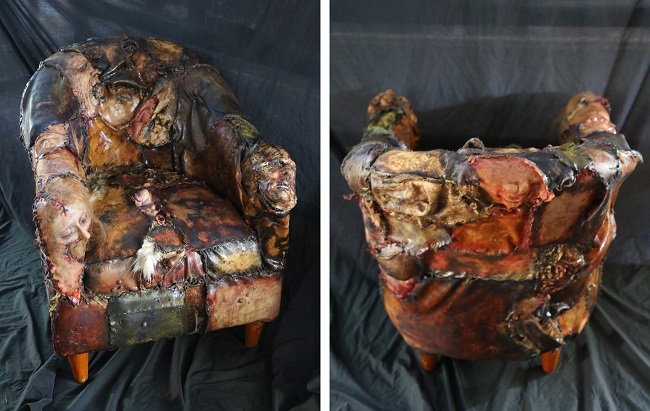A trash can and numerous chairs covered in human flesh, a belt and corset constructed from severed nipples, and human skulls fashioned into bowls were among the items discovered in Ed Gein’s home.
While the name “Ed Gein” may not be as well-known as that of “Ted Bundy,” the shocking discovery made by authorities upon Ed Gein’s capture sent shock waves across 1950s America. Robert Bloch’s 1959 novel Psycho and its 1960s film adaptation were profoundly impacted by Gein’s pathological obsession with his mother’s memory.

Both The Texas Chainsaw Massacre and The Silence of the Lambs relied heavily on gory details, such as the killer’s penchant for decapitation, necrophilia, cutting off body parts, keeping victims’ organs in jars, and using their skin to make homemade chairs, masks, and lampshades. Click to find out ed gein furniture.
Contents
Who was Ed Gein?
Edward Theodore Gein was a serial killer and corpse thief operating in the United States. He was also known as the Butcher of Plainfield and the Plainfield Ghoul. Gein’s crimes gained widespread attention in 1957 after authorities learned that he had unearthed bodies from local graveyards and made trophies and souvenirs from their bones and skin.
His crimes took place in and around Plainfield, Wisconsin. In addition, Gein admitted to the murders of Mary Hogan, the proprietor of a bar, in 1954, and Bernice Worden, the proprietor of a hardware shop, in 1957.
Edward Theodore Gein, a serial killer and body snatcher from the United States, was born into a poor family in 1906 in La Crosse County, Wisconsin. His devoutly religious mother, Augusta, was deeply opposed to his alcoholic father, George.
His mother instilled in Ed Gein the ideas of the world’s inherent longevity, the perils of alcohol, and the fact that all women, with the exception of herself, were tools of the devil.
Gein was teased by his peers as a child for being awkward and laughing at inappropriate times. When Augusta saw her son attempting to make friends, she disciplined him severely. He was somewhat successful in school despite his cold demeanor.
Henry’s Death Termed As An Accident
Ed Gein and his older brother Henry were clearing a marsh of vegetation in 1944. One of them, however, did not make it through the night. When firefighters arrived to put out the blaze in their field, Ed informed them that Henry had mysteriously disappeared.
His lifeless body was discovered in the swamp shortly afterward, lying on its back. The police ruled out murder, and the county coroner determined that the victim had died of asphyxiation.
The problem is that after Henry’s death, whether by accident or not, the farmhouse belonged solely to Ed Gein and Augusta. Until Augusta’s death in 1945, they remained there in seclusion for close to a year. Henry’s head was bruised, according to biographer Harold Schechter.
When Gein Was Left Alone With Mother
After their father’s death, Gein and his brother made an effort to fill the void left by their father’s admitted laziness. In order to keep their mother from turning on them, the two brothers took odd occupations to make ends meet. But in 1944, a supposed catastrophe drastically diminished the Gein family.
Henry was killed when the fire Gein and he started to clear brush from the family farm got out of hand. True crime fans and armchair detectives started wondering what happened that day only after Gein’s future crimes were exposed by the law and the world at large.
Conclusion
What about films like “Silence of the Lambs,” “The Texas Chainsaw Massacre,” and “Psycho”? If so, you’re likely familiar with the tragic tale of Ed Gein, the “Butcher of Plainfield” and a psychopathic killer.
The awful story of this real-life killer awaits you if you haven’t read these unsettling masterpieces yet; if you haven’t, you should. The horrific acts committed by Ed Gein against so many helpless people are described here. Hope you know ed gein furniture.






























